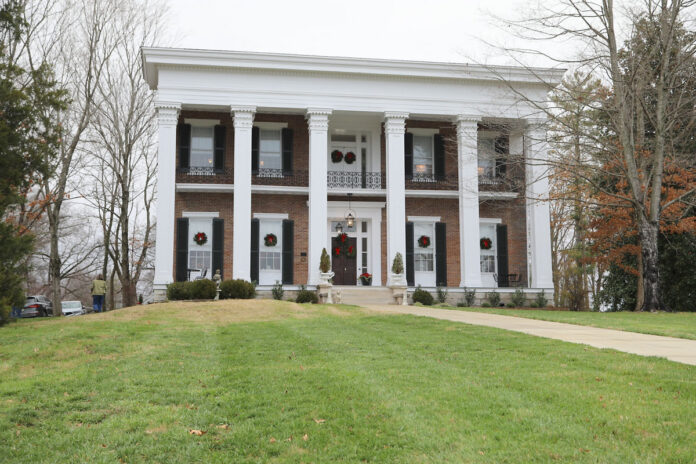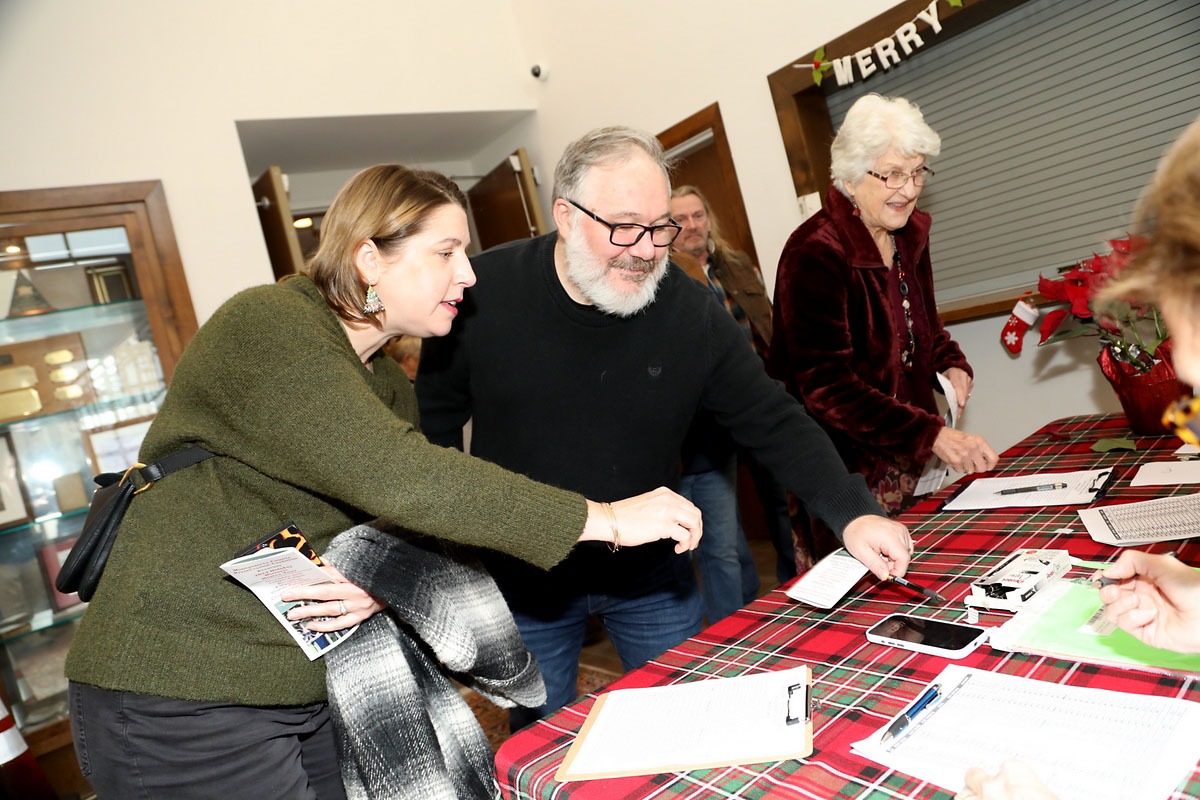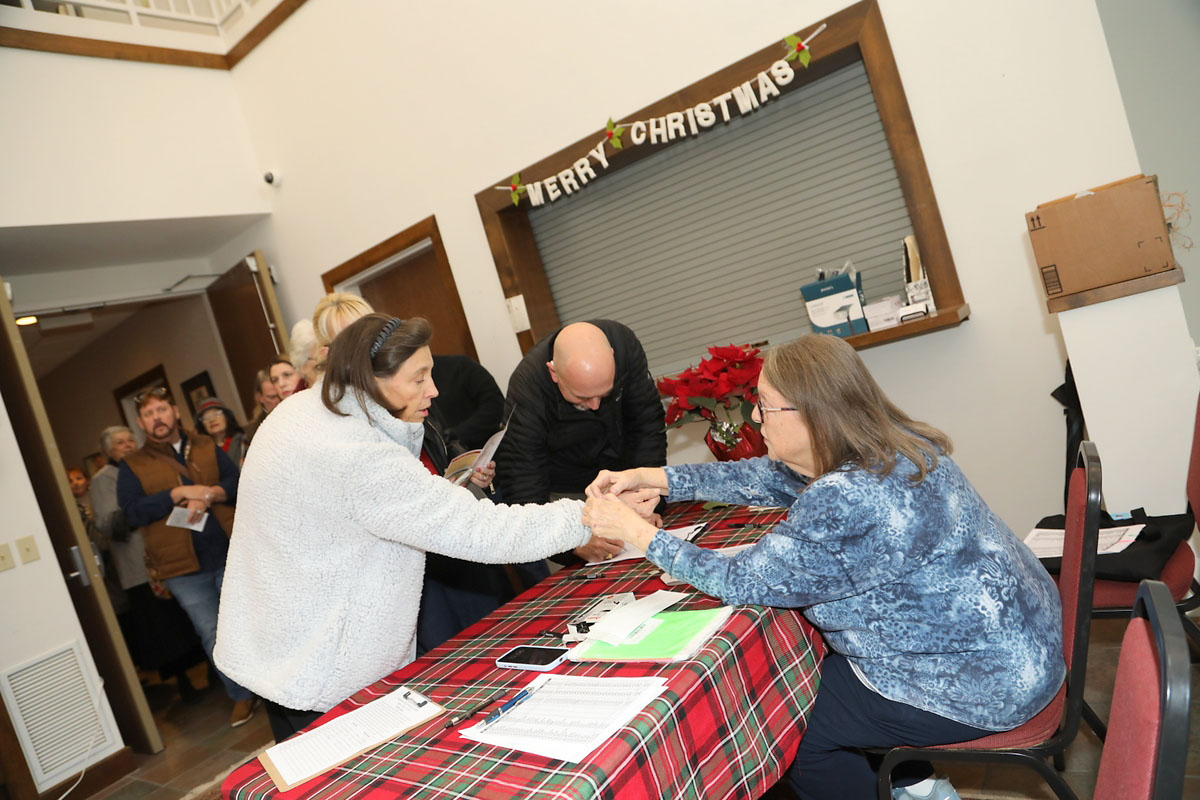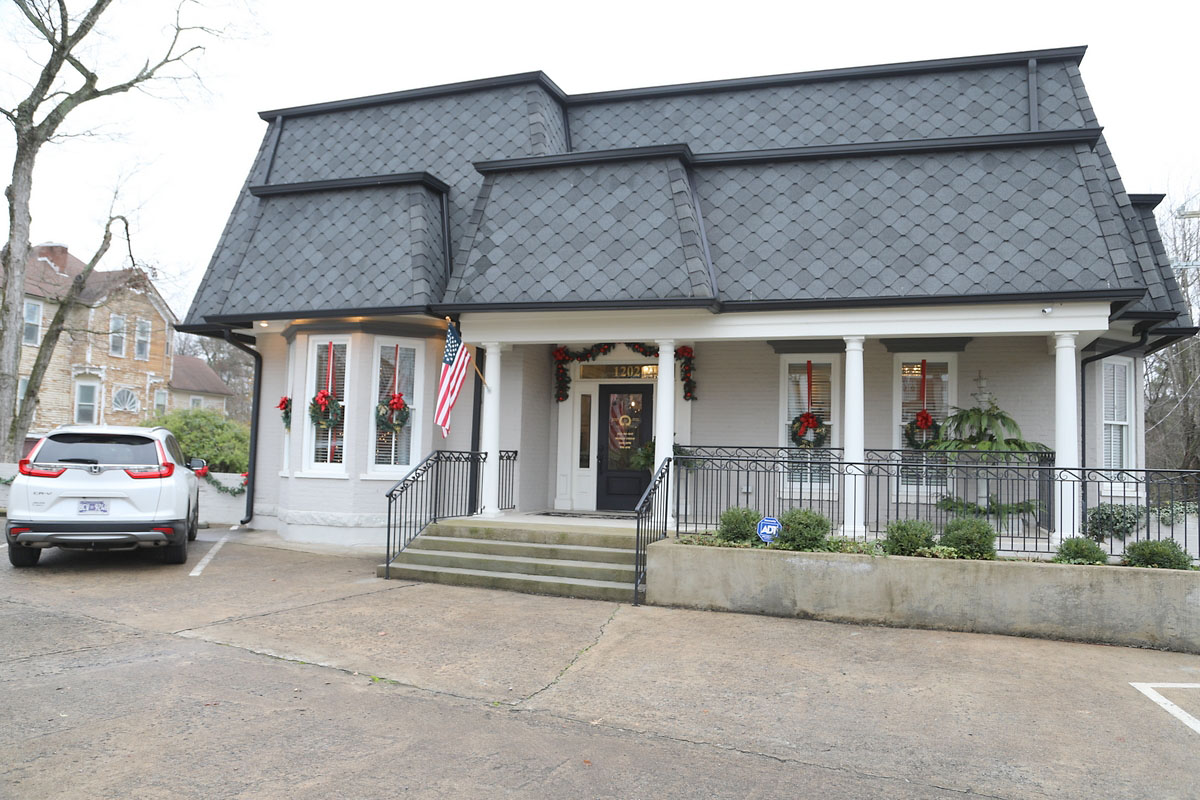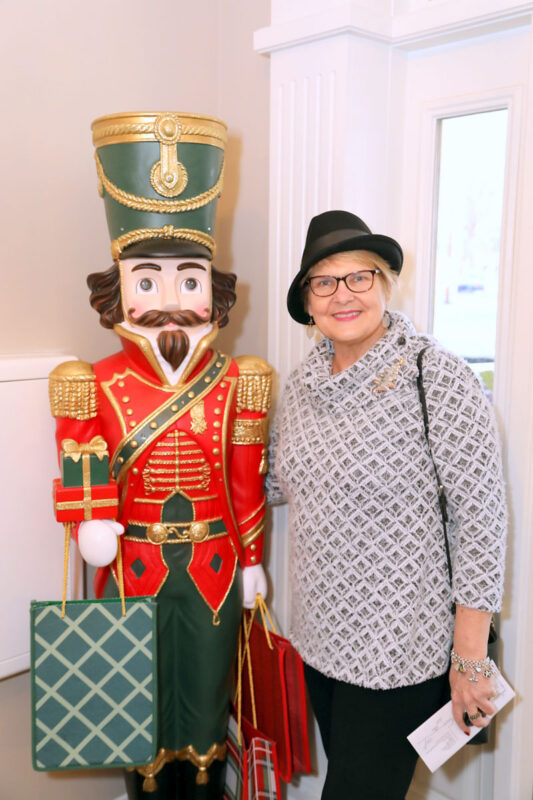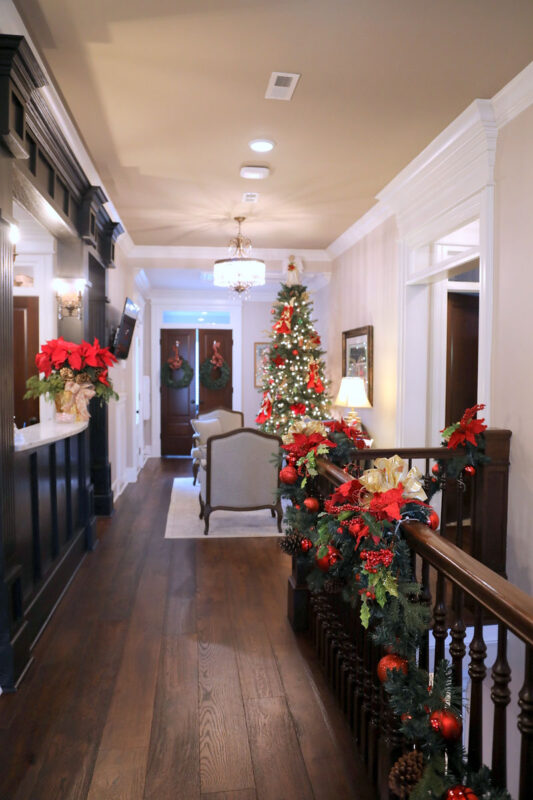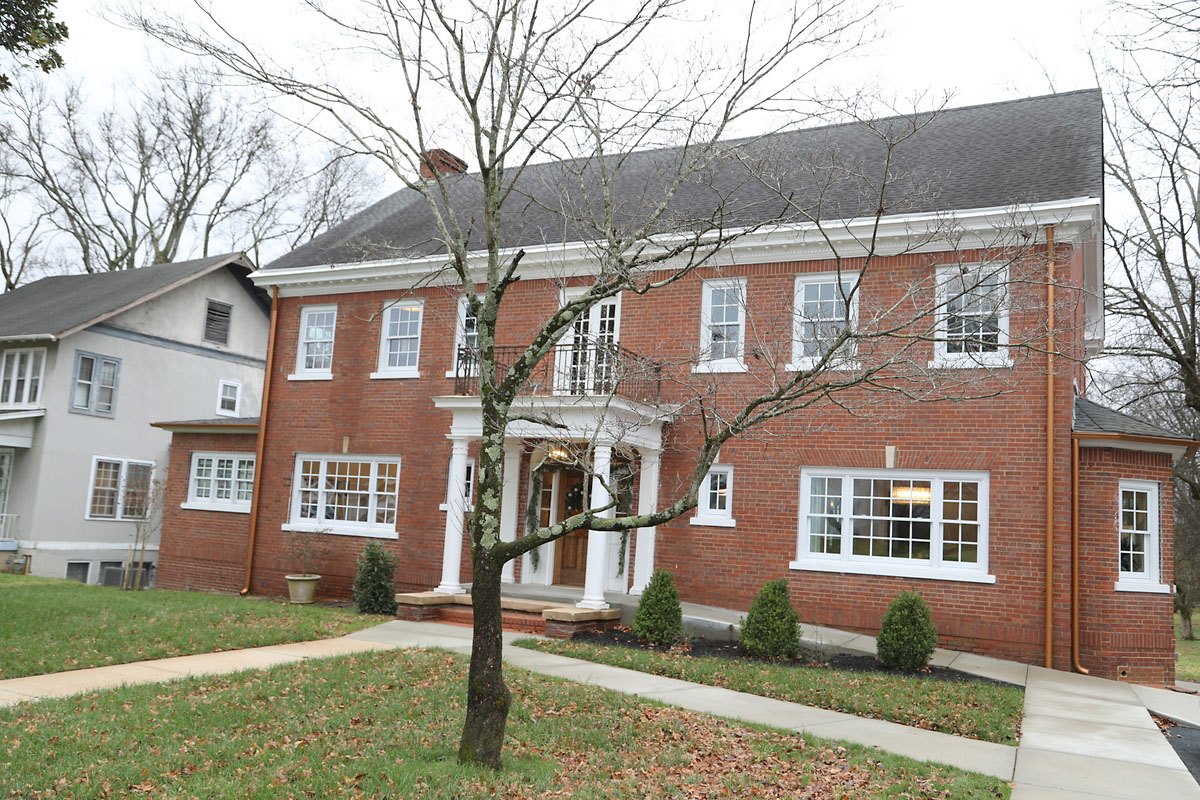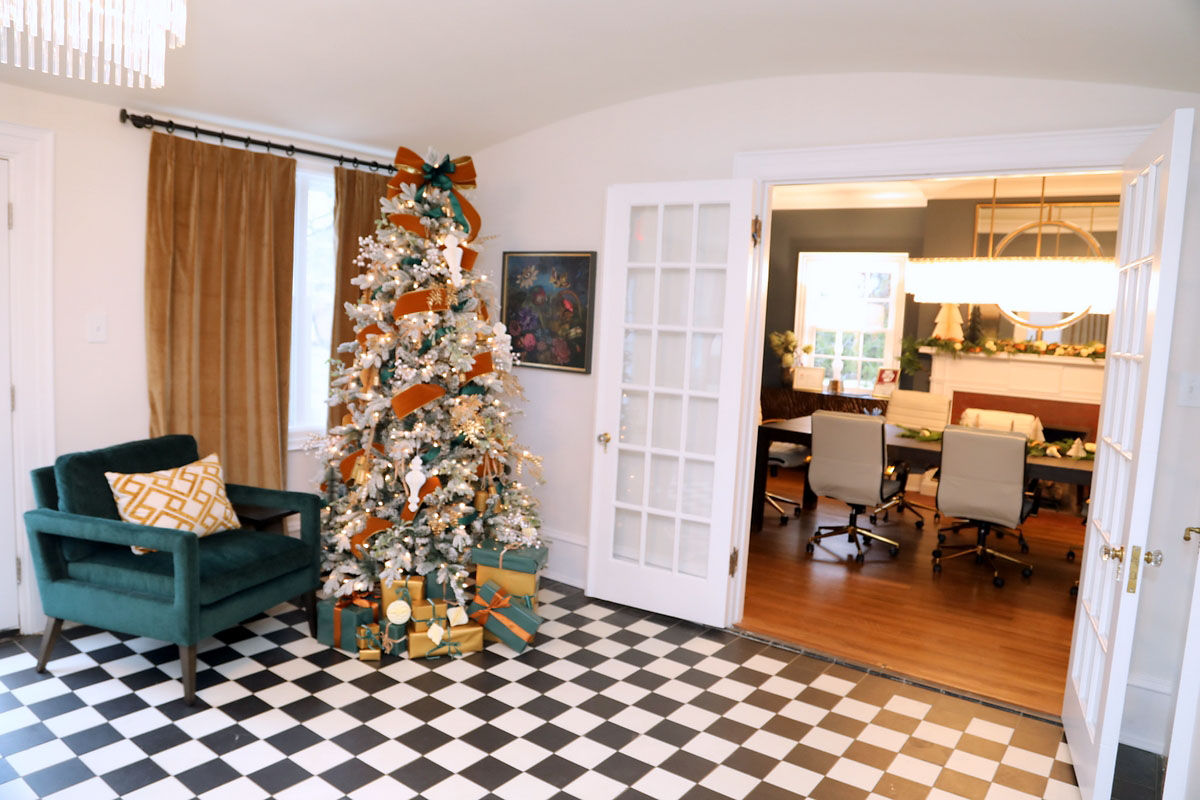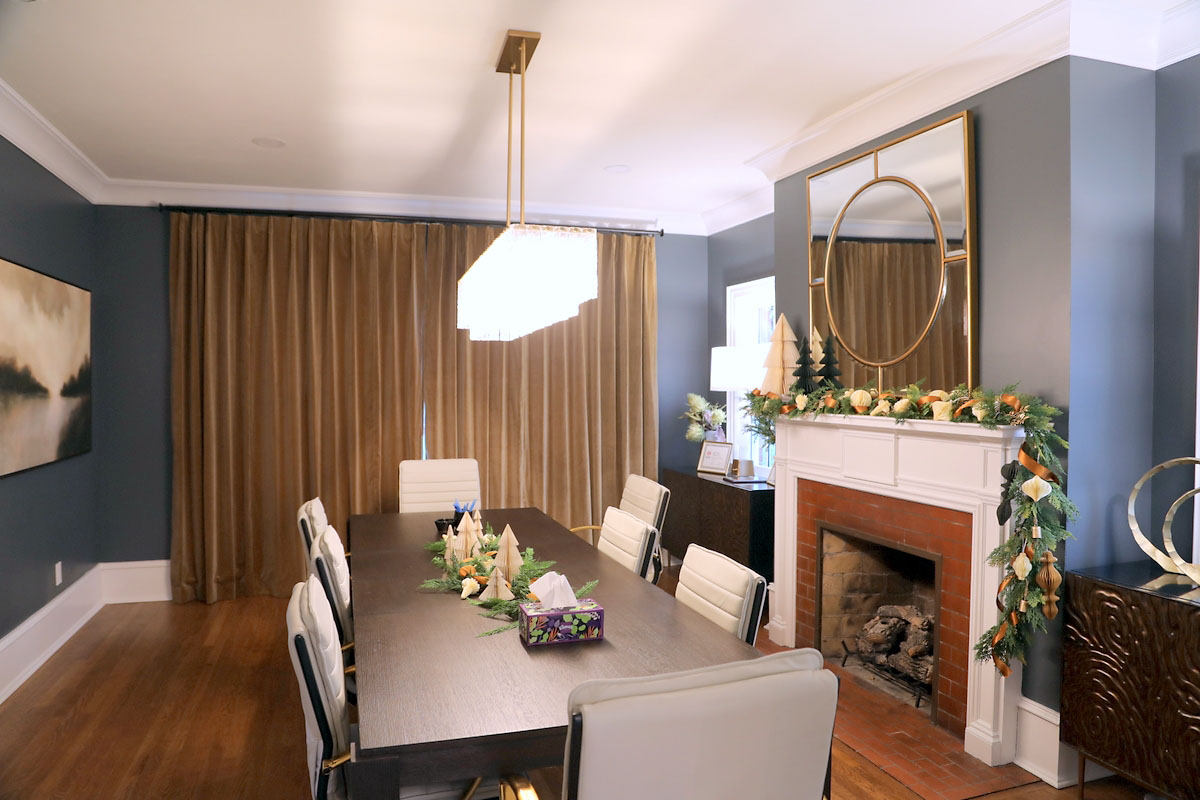Written by Cindy Podurgal Chambers
 Clarksville, TN – Clarksville’s Historic Homes Tour dazzled and delighted participants on December 15th, jingling back to life after an absence of some 25 years. Presented by the Montgomery County Preservation Coalition, the tour ushered in the season by welcoming ticket-holders to seven of the city’s most historic homes, each beautifully bedecked for the holidays.
Clarksville, TN – Clarksville’s Historic Homes Tour dazzled and delighted participants on December 15th, jingling back to life after an absence of some 25 years. Presented by the Montgomery County Preservation Coalition, the tour ushered in the season by welcoming ticket-holders to seven of the city’s most historic homes, each beautifully bedecked for the holidays.
One of the tour’s organizers, Brenda Harper, called the event “a great success on so many levels. Its purpose was to focus attention on the positive impact, feasibility and necessity of preserving Clarksville’s history, and it did that. Just as importantly, everyone – including the generous homeowners and volunteers – seemed to enjoy the day.”
More than a century ago, paying “social calls” on neighbors during the Christmas holidays would have been de rigueur for Clarksvillians. Then, as now, these same homes would have been adorned in their holiday finery, says County Historian Carolyn Ferrell. Candles would glow and flames would flicker in every fireplace, while mantels and staircases draped with fresh greenery would scent the air with evergreen. Back then, Christmas trees were usually of the smaller, tabletop variety – but certainly just as thrilling to youngsters as the grand trees on display during the recent tour.
This year’s event was far more than just a lovely way to celebrate the holidays. According to the Montgomery County Preservation Coalition’s official guidebook, the city has lost more than half its historic properties over the last 40 years, highlighting the need to protect and preserve those that remain. In fact, the threatened demolition of the Dunlop-Miller house on Madison Street was the major impetus for renewed efforts to strengthen historic preservation awareness and advocacy. Emphasizing the tour’s vital mission, the guidebook goes on to state that tour-goers “will see what can be done to save and repurpose our historic buildings that tell the story of our heritage. Whether used as a home place or business, these structures represent successful preservation efforts.”
One of the tour’s many success stories is the Kimbrough-Denton House. Built in 1903, it’s been the home of David and Debbie Denton for the past 30 years.
“David and I first fell in love with the idea of owning an old house after going on several historic home tours in various towns,” Debbie says. “So when Don Sharpe [past president of the Montgomery County Historical Society] said one of the goals of the tour was to show people what could be done with these old homes, we felt like we were just paying it forward.”
The couple’s renovation efforts have resulted in a marvelous marriage of old and new, seamlessly blending much-loved antiques with modern furnishings and finishes. The home’s state-of-the-art kitchen now features bespoke cabinetry and an eye-catching range hood which fronts a large window, soaring 11 feet to the ceiling above. Under the guidance of Don Sharpe himself, the couple added 1,100 square feet of living space to the house by transforming a dark attic into a charming guest suite, its original heart-pine flooring now reflecting dreamy pastel walls, light-filled alcoves, and spun-sugar fabrics.
“Being part of the tour was just incredibly gratifying, Debbie says. “We’ve put our heart and soul – not to mention a lot of our resources – into making this house a wonderful place to live. And to have so many people say that it was beautiful, or warm, or inviting, was just absolutely amazing.”
For Debbie, one of the best parts of the tour was having Mr. Ben Kimbrough in attendance. Born in 1928, Mr. Kimbrough grew up in the house. “He answered several questions about the history and original structure of the home and shared memories of his childhood here – including being responsible for building fires in the house’s coal-burning fireplaces as a youth.” Best of all, she adds, “he seemed so pleased to see that the house was being well cared-for and is very much loved.”
Each stop on the tour reflected the same delightful devotion to past and present: They show that historic structures can become beautiful, comfortable homes and businesses without sacrificing modern convenience. Other historic buildings showcased were:

The Forbes/Mabry House – This Italianate home was built by Confederate colonel William Forbes, a tobacconist and professor at Stewart College. Owned since 1987 by Don Sharpe and his artist wife, Patsy, the home has been lovingly returned to its Victorian glory, earning it a listing on the National Register of Historic Places. A peek into Patsy’s vibrant art studio, located on the sunny second floor, shows some of the creative spirit that helped breathe new life into the old home.

The Lurton House (“Purple House”) – This Queen Anne beauty, constructed in the late 1800s by Edmond B. Lurton, once housed the family of Sallie Hurst, future wife of Austin Peay, Tennessee’s 35th governor. Now the site of Solutions 21, a business-consulting firm specializing in succession planning and leadership development, the historic house is lovingly cared for and managed by Patricia and Rob Salome.
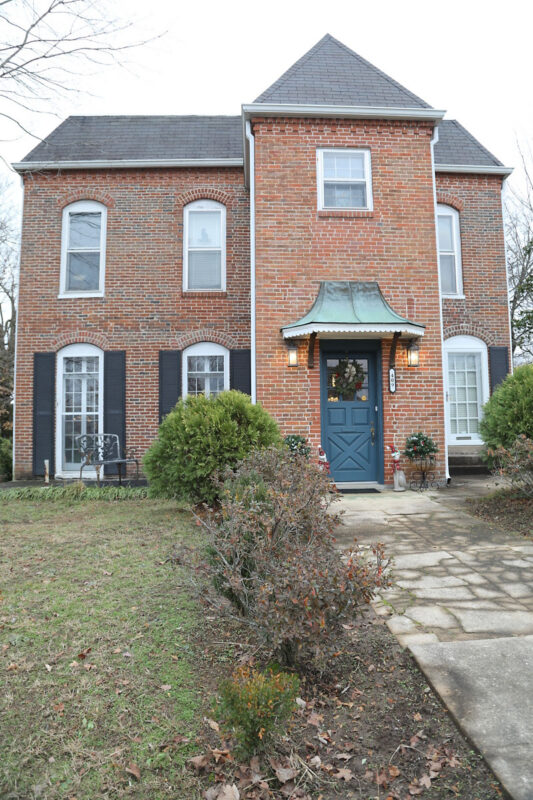
The Judge Tyler House (“The Pearl”) – Formerly the antebellum home of esteemed Judge Charles Tyler and his family, the sedate exterior of this 1850’s gem belies the exuberance contained within. Now the home of former international investment banker Christoph Hrdina and renowned artist Kitty Harvill, the lively and livable space is filled with bright and whimsical artwork, colorful furnishings from around the world, and frequent nods to the pair’s dedication to global conservancy. When Christoph promised Kitty he would have the time-worn house “looking like a pearl within two years,” it earned both a new nickname and the gratitude of local history-lovers.

The Dozier House – This Colonial Revival house was built in 1928 and was once the family home of Richard Dunzlemann, who emigrated from Germany to become a leading Clarksville tobacconist. It was purchased by former Clarksville mayor William Barksdale, Jr., in the 1950s and later housed the Roy and Mary Jo Dozier family. A painstaking renovation by current owners Cody and Taylor Dahl transformed it into the stately and functional law offices of Taylor R. Dahl and Associates.
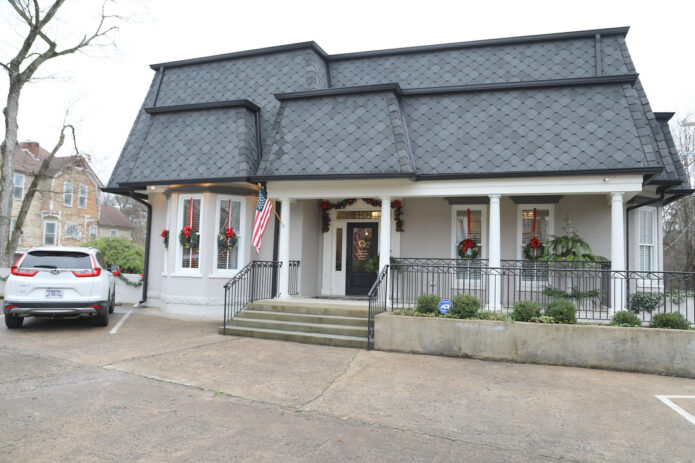
The Conroy Place – Constructed at the turn of the 20th century, this hip-roofed gem was once the home of the John Joseph Conroy, Sr., family. After being purchased by Hubert Griffey in 1974, its upper floor became a real estate office while its downstairs was used as an apartment. New owners Ladonna and Michael Dowdy embarked on a comprehensive renovation, and they now house their business, Dowdy Roy Financial, on the upper floor. The downstairs serves as a cozy space to host out-of-town business partners during the week, while operating as a warm, welcoming Airbnb on the weekends.
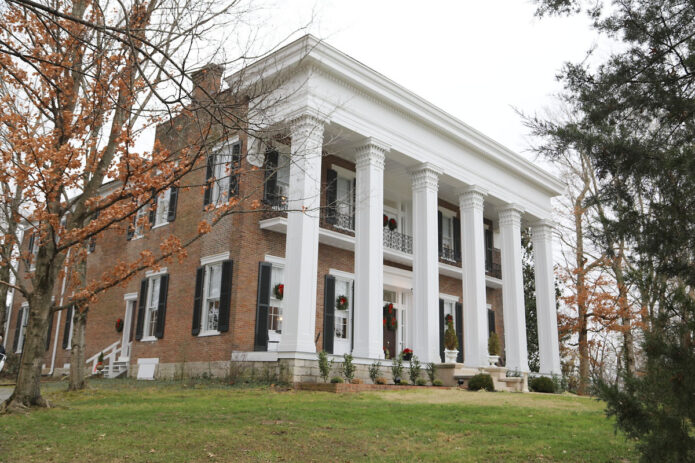
Tip Top – Arguably Clarksville’s most storied and recognized family home, this columned Greek Revival was built to impress in 1859. Sitting on the highest crest in Clarksville at that time, Tip Top was built for wealthy tobacconist Joseph Williams and was notably occupied by Union officers during the Civil War. It later became home to the Dunlop family, who sold it in 1908 to Tennessee Governor Malcolm Patterson for use as a summer home. It was then purchased by Joseph Trahern, who passed it on to his Patch family descendants. Elwyn and Rubye Patch raised their family in the historic home, replete with 14-foot ceilings, seven working fireplaces, and portraits of erstwhile ancestors in nearly every room. Today Tip Top is occupied by daughter Margaret Patch Ward and her husband Jim, whose extensive renovations have brought stunning style and modern convenience to the mansion – without sacrificing a smidgeon of historic heritage.
Trinity Episcopal Church – First constructed in 1835, the original building was demolished in 1873, and a new one was completed in 1877. Victorian-Gothic in style, it’s one of the five oldest Episcopal parishes in Tennessee and is listed on the National Register of Historic Places. For nearly a century-and-a-half, Trinity Church and its Rectory have supported Clarksville families by facilitating rites of passage and hosting memorable events like the afternoon reception that followed the December tour.
The Tour Committee is grateful to James Neville Vickers, who not only proposed the idea of a post-event reception but provided the refreshments. Attendees lingered over finger foods, Clarksville’s famous “Fuss Cookies,” hot spiced tea, and a variety of wines courtesy of Beachaven Winery. One lucky attendee won the reception door prize, an original framed painting of a poinsettia generously donated by artist Kitty Harvill.
Participant Debbie Underwood has fond memories of attending local events like this one in the past, and says the tour provided the perfect venue for friends to gather during the busy holiday season.
“I loved that I got to visit with so many people I haven’t seen for a while,” she says. “It was nice that there were enough styles and tastes on the tour to satisfy everyone, and the fact that it was self-guided allowed everyone to enjoy each home at their own pace.”
Debbie added that she hopes this is the beginning of a trend here in Clarksville. “I definitely don’t want to wait another 25 years to do this again.” She’s in luck: Louisa Cooke, one of the event organizers, says, “We plan to grow this, and hope to offer similar events moving forward – maybe as early as this spring.”
In addition, the Preservation Coalition has and will continue to provide information about local preservation issues through public meetings and email distributions. Send your name and email to mc.preservation.coalition@gmail.com to receive meeting notices and updates on issues.
Preservation Coalition Director Jennifer Rudolph adds that through continued partnerships with both the Arts & Heritage Council and the Montgomery County Historical Society, “we’re working toward preventing ‘demolition by neglect,’ which has happened far too often in our city’s history.” To do so, they want to offer greater guidance and grant money to those wishing to purchase and restore a historic home, and to advocate for stronger protection of historic structures and places.
As the December Historic Homes Tour proved, preserving pieces of our past is a bright – and beautiful – idea.

